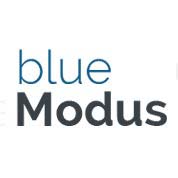
I’ve been working in the accessibility space for a couple of years now, but it wasn’t until last year that I started to pay attention to the landscape of ADA web accessibility lawsuits, and a lot of what I learned surprised me. Here are my top 6 unexpected learnings and realizations from 2020.
- What do you mean it’s NOT the law?
Believe it or not, there is no actual law or regulation in the United States saying that your website needs to be accessible to people with disabilities…it’s all based on a patchwork of court judgments. It does seem like Congress has noticed, and they are expected to act on it soon.
The Department of Justice has waffled on the issue, it released some guidance, worked on some regulations, and then took it all back in 2017.
As for the courts, they long disagreed on the issue but are all now in agreement that the ADA applies to websites and apps.
While many think the Supreme Court missed an opportunity to put the question to rest once and for all by hearing Robles vs. Dominos, in fairness, no one seriously believes the ADA does not apply to websites and apps anymore.
ArsTechnica has a great article on the Dominos case and its implications.
- Retail is the BIGGEST target BY FAR.
I found this particularly interesting because it was not for the reasons I expected.
January - June 2020: 76% of ADA web accessibility lawsuits were against retailers.
Retailers are a prime target because they already understand the ADA based on their physical spaces, so the concepts are familiar. Additionally, they are great targets because a single retailer will often have multiple websites and apps, and the nature of e-commerce makes it easier to claim that inaccessibility caused actual harm.
- If you win a lawsuit, you don’t get damages.
This one blew my mind. The ADA does not allow for damages, rather it focuses on “injunctive relief”–making the violator fix the problem. It does allow for awarding attorney’s fees though, and, depending on where you are, state laws may come into play.
It REALLY matters what state you are in.
When it comes to filing an ADA lawsuit, certain venues are more profitable than others, and as you’d imagine, that’s where most of the suits are filed.
In 2019 CA, NY, and FL comprised 89% of all web accessibility lawsuits.
In New York, the State Human Rights Law and City Human Rights Law extend the ADA allowing for unlimited damages.
In California, the Unruh Civil Rights Act extends the ADA allowing treble (“triple”) damages with a minimum of $4,000/incident. While this “per incident” language was troublesome, in 2018 it was clarified to be “one per person” rather than “every time I refreshed the page.”
As for Florida, I haven’t been able to find any reason besides “a lot of plaintiffs reside there.” If you have any info or ideas, please let me know.
- Web Accessibility is the new toxic tort.
80% of ADA web accessibility lawsuits are filed by 10 law firms.
Unfortunately, web accessibility seems to be paralleling the development of the toxic tort litigation industry (i.e., asbestos/mesothelioma). There are legitimate claims to be sure, but they are overshadowed by the overwhelming number of opportunists fishing for settlement money. As an example, it’s not uncommon for a firm to sue tens or hundreds of companies at a time using the same paperwork, serving settlement demands in short order. Since the ADA does not allow for monetary damages but does allow for awarding of attorney’s fees, if a quick settlement is not possible, the incentive is to rack up reimbursable fees.
- If you’re a “small business” the IRS will help you pay for accessibility improvements.
This shocked me, but it probably shouldn’t have. If you are a “small business,” the government will help you improve your accessibility through tax credits and deductions. I guess I was so surprised because I’d never heard of anyone taking them up on it. I’m not a lawyer or an accountant, so talk to one of those if you’re interested, and read the details here.










